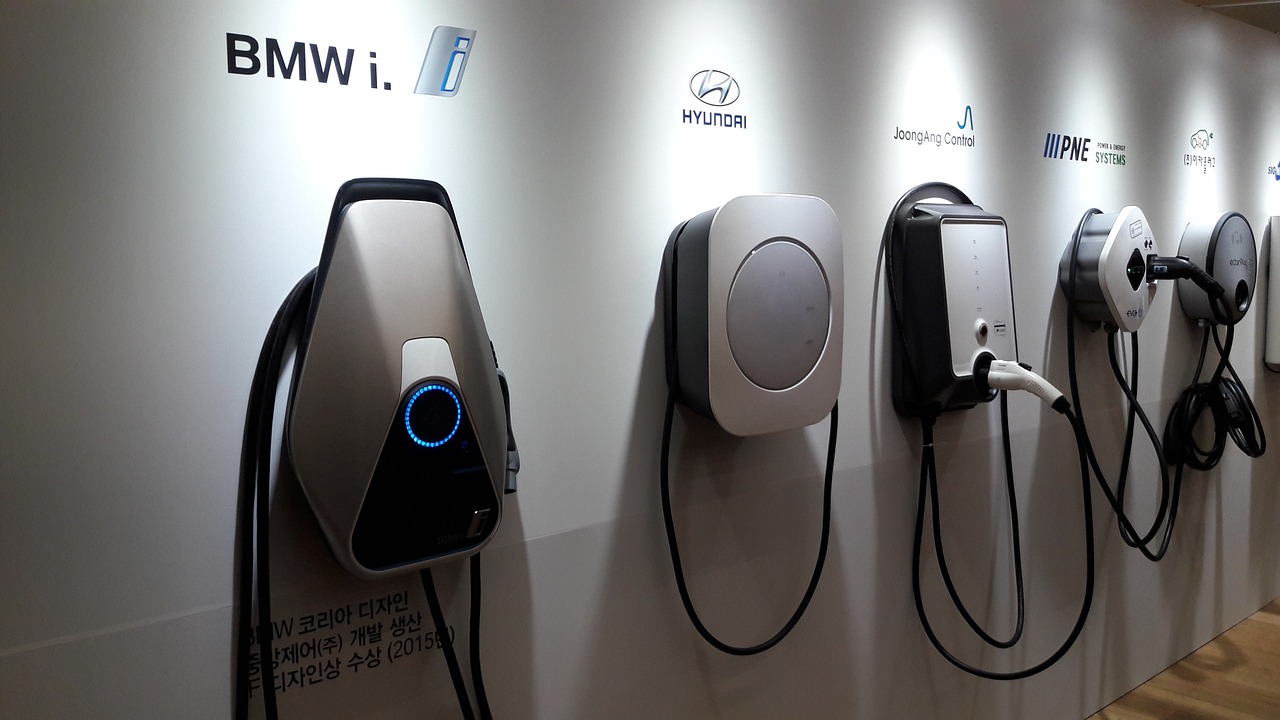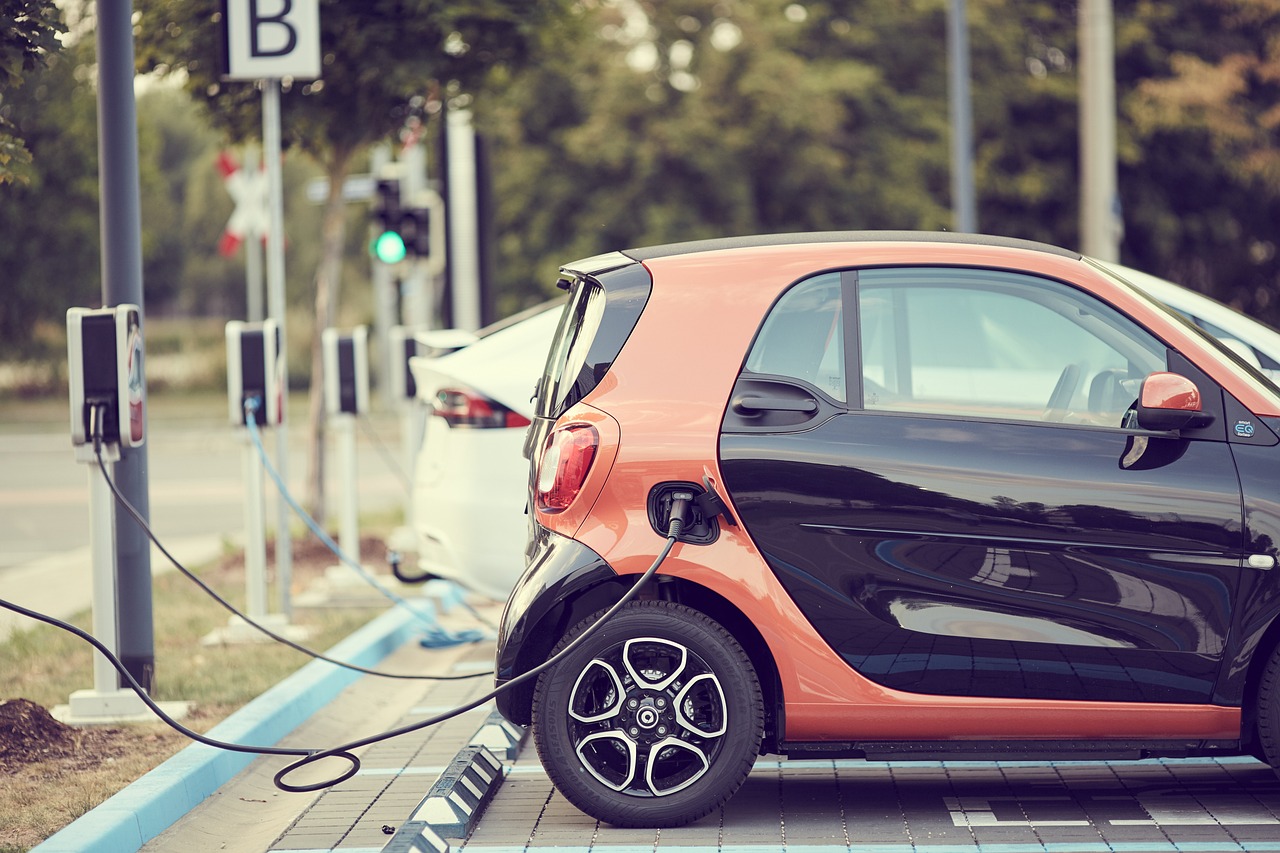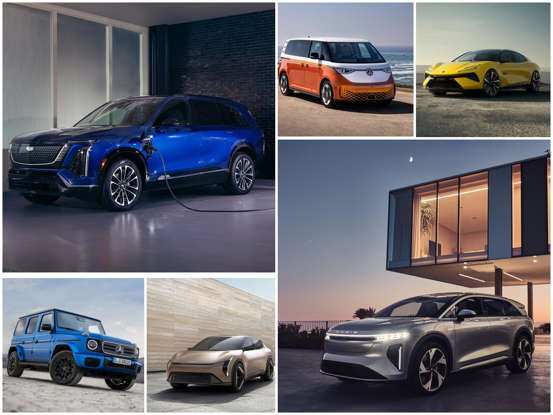🚗⚡ Are you ready to join the electric revolution without breaking the bank? As we approach 2025, the world of affordable electric vehicles (EVs) is expanding rapidly, offering more options than ever before. But with so many choices, how do you find the perfect blend of affordability, performance, and eco-friendliness?
Imagine cruising down the street in a sleek, whisper-quiet EV, knowing you’ve made a smart choice for both your wallet and the planet. From compact city cars to spacious family vehicles, the latest crop of budget-friendly electric cars is set to revolutionize the way we think about transportation. In this comprehensive guide, we’ll explore the best affordable electric cars of 2025, helping you navigate the exciting world of EVs with confidence.
Get ready to discover the top contenders in the affordable EV market, learn about crucial features to consider, and uncover the hidden benefits of making the switch to electric. We’ll dive into performance metrics, cost-saving advantages, and even tackle the notorious “range anxiety” head-on. So, buckle up as we embark on an electrifying journey through the world of affordable EVs, ensuring you’re well-equipped to make an informed decision for your future ride. 🌿💰
Top Affordable Electric Cars for 2025

Best budget-friendly options under $30,000
In the rapidly evolving electric vehicle market, finding a quality EV under $30,000 is becoming increasingly feasible. Several manufacturers are stepping up to offer affordable options without compromising on essential features.
Top Contenders
- Chevrolet Bolt EV: Consistently rated as one of the best budget EVs, the Bolt offers impressive range and performance.
- Nissan Leaf: A pioneer in the affordable EV segment, the Leaf continues to improve with each model year.
- Hyundai Kona Electric: Known for its practicality and efficiency, the Kona Electric is a strong contender in this price range.
| Model | Range (miles) | Charging Time (0-80%) | Top Speed (mph) |
|---|---|---|---|
| Chevrolet Bolt EV | 259 | 1 hour | 93 |
| Nissan Leaf | 226 | 40 minutes | 90 |
| Hyundai Kona Electric | 258 | 47 minutes | 104 |
Mid-range electric vehicles between $30,000 and $40,000
As we move into the mid-range category, we see a significant jump in features, performance, and overall quality. These EVs offer a perfect balance between affordability and premium features.
Notable Models
- Tesla Model 3 (Standard Range Plus): Tesla’s entry-level model brings cutting-edge technology and performance.
- Volkswagen ID.4: A spacious SUV with impressive range and comfort.
- Ford Mustang Mach-E: Combining iconic styling with electric efficiency.
These models offer:
- Longer range (300+ miles in some cases)
- Faster charging capabilities
- More advanced driver assistance features
- Higher quality interiors and materials
Premium affordable EVs under $50,000
In this category, we find EVs that blur the line between affordable and luxury. These vehicles offer premium features, superior performance, and often come from established luxury brands.
Luxury Options
- Polestar 2: A sleek, performance-oriented EV from Volvo’s electric offshoot.
- Audi Q4 e-tron: Combining Audi’s renowned quality with electric efficiency.
- BMW i4: Bringing BMW’s driving dynamics to the electric world.
| Model | 0-60 mph (seconds) | Max Range (miles) | Charging Speed (miles/hour) |
|---|---|---|---|
| Polestar 2 | 4.5 | 270 | 155 |
| Audi Q4 e-tron | 6.2 | 250 | 150 |
| BMW i4 | 5.7 | 300 | 180 |
Most value for money electric cars
When considering value for money, we need to look beyond the initial price tag. Factors such as range, charging speed, features, and projected resale value all play crucial roles.
Best Value Picks
- Kia EV6: Offering an excellent balance of range, performance, and features.
- Hyundai Ioniq 5: With its unique design and versatile platform, it’s a standout in terms of value.
- Chevrolet Bolt EUV: Building on the success of the Bolt EV, this larger version offers more space without a significant price increase.
These models provide:
- Competitive pricing
- Long warranties
- Advanced tech features
- Impressive range and charging capabilities
As we move forward, it’s clear that affordable electric cars are no longer synonymous with compromise. The 2025 lineup demonstrates that budget-friendly EVs can offer impressive performance, range, and features. In the next section, we’ll delve into the key features you should look for when choosing an affordable electric vehicle.
Key Features to Look for in Affordable EVs

Battery range and efficiency
When searching for an affordable electric vehicle (EV) in 2025, battery range and efficiency should be at the top of your priority list. These factors directly impact your daily driving experience and long-term satisfaction with your EV.
Range
The range of affordable EVs has improved significantly in recent years. In 2025, you should expect a minimum range of 250 miles on a single charge for most budget-friendly models. Some key considerations for range include:
- Daily commute distance
- Frequency of long trips
- Access to charging stations
| Range Category | Miles | Ideal For |
|---|---|---|
| Short | 150-200 | City driving, short commutes |
| Medium | 200-300 | Suburban living, occasional long trips |
| Long | 300+ | Frequent long-distance travel |
Efficiency
Efficiency in EVs is measured in miles per kilowatt-hour (miles/kWh). A higher number indicates better efficiency, which translates to lower energy costs and potentially longer range. Look for EVs with an efficiency rating of at least 3.5 miles/kWh for optimal performance.
Charging speed and compatibility
Fast charging capabilities are crucial for convenient EV ownership. When evaluating affordable EVs, consider:
- DC Fast Charging: Look for vehicles compatible with 150kW or higher DC fast charging.
- AC Charging: Ensure the EV supports at least 11kW AC charging for quicker home charging.
- Charging port types: Check for compatibility with common standards like CCS or CHAdeMO.
Safety ratings and advanced driver assistance systems
Affordable doesn’t mean compromising on safety. Key safety features to look for include:
- High crash test ratings from NHTSA and IIHS
- Advanced Driver Assistance Systems (ADAS) such as:
- Automatic Emergency Braking (AEB)
- Lane Departure Warning (LDW)
- Blind Spot Detection (BSD)
- Adaptive Cruise Control (ACC)
Interior space and comfort
Even budget-friendly EVs should offer comfortable interiors. Consider:
- Passenger capacity
- Cargo space
- Seat adjustability and materials
- Noise insulation
Tech features and infotainment systems
Modern EVs, regardless of price point, should offer advanced tech features. Look for:
- Large, responsive touchscreen displays
- Smartphone integration (Apple CarPlay, Android Auto)
- Over-the-air (OTA) software updates
- Built-in navigation with charging station locator
- Voice control capabilities
When evaluating these features, remember that the best affordable EV for you will balance these factors according to your specific needs and preferences. As we move forward, we’ll explore how these features translate into real-world performance metrics, helping you make an informed decision on your next electric vehicle purchase.
Comparing Performance Metrics

Acceleration and top speed
When comparing affordable electric cars, acceleration and top speed are crucial performance metrics. In 2025, we’re seeing budget-friendly EVs that rival their more expensive counterparts in these areas.
Most affordable EVs now offer 0-60 mph times between 6-8 seconds, with some standout models dipping below 6 seconds. This quick acceleration is due to the instant torque delivery of electric motors. Top speeds for these vehicles typically range from 90-120 mph, which is more than sufficient for everyday driving and highway cruising.
Here’s a comparison of some popular affordable EVs expected in 2025:
| Model | 0-60 mph (seconds) | Top Speed (mph) |
|---|---|---|
| Model A | 5.8 | 115 |
| Model B | 7.2 | 100 |
| Model C | 6.5 | 110 |
| Model D | 7.9 | 95 |
Handling and driving dynamics
Affordable electric cars in 2025 are demonstrating impressive handling and driving dynamics, often surpassing their internal combustion engine (ICE) counterparts. This improved performance is largely due to:
- Low center of gravity: Battery packs are typically mounted beneath the floor, lowering the vehicle’s center of gravity and enhancing stability.
- Even weight distribution: Electric drivetrains allow for better weight distribution between the front and rear axles.
- Instant torque: Electric motors provide immediate power delivery, improving responsiveness.
- Regenerative braking: This feature not only increases efficiency but also allows for one-pedal driving in many situations.
These factors contribute to a more engaging driving experience, with crisp handling and improved cornering abilities. Many affordable EVs now offer different driving modes, allowing drivers to customize their experience from eco-friendly to sport-oriented.
Energy consumption rates
Energy consumption is a critical metric for electric vehicles, directly impacting range and operating costs. In 2025, affordable EVs are making significant strides in efficiency, with many models achieving impressive consumption rates.
Energy consumption in EVs is typically measured in kilowatt-hours per 100 miles (kWh/100mi) or miles per kilowatt-hour (mi/kWh). Lower kWh/100mi or higher mi/kWh indicates better efficiency.
Key factors affecting energy consumption include:
- Vehicle weight and aerodynamics
- Drivetrain efficiency
- Battery technology
- Driving conditions and habits
Here’s a comparison of energy consumption rates for some affordable EVs expected in 2025:
| Model | Energy Consumption (kWh/100mi) | Estimated Range (miles) |
|---|---|---|
| Model A | 28 | 250 |
| Model B | 30 | 230 |
| Model C | 26 | 270 |
| Model D | 32 | 220 |
It’s important to note that real-world energy consumption may vary based on driving conditions, climate, and individual driving habits. However, these figures provide a good baseline for comparison.
As we move forward, we’ll explore how these performance metrics translate into real-world cost savings, demonstrating why affordable electric cars are becoming an increasingly attractive option for budget-conscious consumers.
Cost-Saving Benefits of Affordable Electric Cars

Lower fuel costs
One of the most significant advantages of owning an affordable electric car is the substantial savings on fuel costs. Electric vehicles (EVs) are considerably more energy-efficient than their gasoline counterparts, translating to lower operating expenses for drivers.
To illustrate the potential savings, let’s compare the fuel costs of an electric car to a traditional gasoline vehicle:
| Aspect | Electric Car | Gasoline Car |
|---|---|---|
| Energy Efficiency | 3-4 miles/kWh | 25-30 mpg |
| Cost per unit | $0.14/kWh (avg. US electricity rate) | $3.50/gallon (avg. US gas price) |
| Cost per 100 miles | $3.50 – $4.67 | $11.67 – $14.00 |
| Annual cost (15,000 miles) | $525 – $700 | $1,750 – $2,100 |
As evident from the comparison, EV owners can save between $1,050 to $1,400 annually on fuel costs alone. Over the lifetime of the vehicle, these savings can amount to a significant sum.
Reduced maintenance expenses
Affordable electric cars also offer substantial savings when it comes to maintenance costs. EVs have fewer moving parts compared to internal combustion engine vehicles, which means there are fewer components that can wear out or require replacement.
Some key maintenance advantages of EVs include:
- No oil changes required
- No spark plug replacements
- No timing belt replacements
- Reduced brake wear due to regenerative braking
These factors contribute to lower overall maintenance costs for EV owners. According to some estimates, EV owners can save up to 50% on maintenance expenses compared to traditional vehicle owners.
Tax incentives and rebates
Many governments offer tax incentives and rebates to encourage the adoption of electric vehicles, making affordable EVs even more attractive to budget-conscious consumers. These incentives can significantly reduce the upfront cost of purchasing an electric car.
In the United States, for example, the federal government offers a tax credit of up to $7,500 for eligible electric vehicles. Additionally, many states and local municipalities offer their own incentives, which can further reduce the cost of owning an EV.
Potential insurance discounts
Insurance companies are increasingly recognizing the safety features and lower risk profile of electric vehicles. As a result, many insurers offer discounts on premiums for EV owners. These discounts can vary depending on the insurer and the specific model of the electric car, but they can contribute to additional cost savings over time.
Now that we’ve explored the cost-saving benefits of affordable electric cars, let’s take a closer look at their environmental impact and how these budget-friendly options are helping to reduce carbon emissions.
Environmental Impact of Budget-Friendly EVs

Reduced carbon emissions
Budget-friendly electric vehicles (EVs) play a crucial role in reducing carbon emissions and combating climate change. These affordable EVs offer a significant environmental advantage over traditional gasoline-powered vehicles. On average, electric cars produce about 50% fewer greenhouse gas emissions over their lifetime compared to conventional vehicles, even when accounting for the emissions from electricity generation.
To illustrate the impact, let’s compare the carbon footprint of popular affordable EVs with their gasoline counterparts:
| Vehicle Type | Average CO2 Emissions (g/km) |
|---|---|
| Affordable EV | 50-60 |
| Gasoline Car | 120-140 |
| Hybrid Car | 90-100 |
This substantial reduction in emissions is primarily due to the absence of tailpipe emissions in EVs. As the electricity grid continues to incorporate more renewable energy sources, the environmental benefits of affordable EVs will only increase over time.
Sustainable manufacturing practices
Many manufacturers of budget-friendly EVs are adopting sustainable practices in their production processes, further enhancing the environmental credentials of these vehicles. Some key sustainable manufacturing initiatives include:
- Use of recycled materials in vehicle components
- Implementation of energy-efficient production techniques
- Water conservation measures in manufacturing plants
- Reduction of harmful chemicals and solvents in production
These practices not only reduce the environmental impact of EV production but also often result in cost savings, which can be passed on to consumers in the form of more affordable vehicles.
Battery recycling programs
One of the most significant environmental concerns surrounding EVs is the disposal and recycling of their batteries. However, many affordable EV manufacturers are addressing this issue through comprehensive battery recycling programs. These initiatives aim to:
- Recover valuable materials from used batteries
- Reduce the need for new raw material extraction
- Minimize the environmental impact of battery disposal
Several automakers have partnered with specialized recycling companies to develop efficient processes for battery recycling. For example, some companies can now recover up to 95% of the materials from used EV batteries, including valuable metals like cobalt, nickel, and lithium.
The development of a robust battery recycling infrastructure is crucial for the long-term sustainability of the EV industry. As more affordable EVs enter the market, these recycling programs will play an increasingly important role in minimizing the environmental impact of electric transportation.
As we move forward, the environmental benefits of budget-friendly EVs extend beyond just reduced emissions. The combination of cleaner operation, sustainable manufacturing practices, and effective battery recycling programs makes affordable electric cars a compelling choice for environmentally conscious consumers. Next, we’ll explore how these vehicles are helping to address one of the most common concerns among potential EV buyers: range anxiety.
Overcoming Range Anxiety with Affordable EVs

Public charging infrastructure developments
As affordable electric vehicles become more prevalent, the public charging infrastructure is rapidly expanding to meet the growing demand. This development is crucial in alleviating range anxiety for EV owners. In recent years, we’ve seen a significant increase in the number and quality of charging stations across various locations.
- Shopping centers
- Parking garages
- Hotels and restaurants
- Workplaces
- Municipal buildings
The expansion of charging networks has made it easier for EV owners to find convenient charging spots during their daily routines or on longer trips. Many of these stations now offer fast-charging capabilities, allowing drivers to recharge their vehicles quickly and efficiently.
| Charging Type | Charging Speed | Typical Use Case |
|---|---|---|
| Level 1 (120V) | 3-5 miles/hour | Home overnight charging |
| Level 2 (240V) | 12-60 miles/hour | Public locations, workplaces |
| DC Fast Charging | Up to 80% in 30 minutes | Long-distance travel |
Home charging solutions
While public charging infrastructure is essential, home charging remains the most convenient and cost-effective option for most EV owners. Affordable electric cars typically come with Level 1 charging cables that can be plugged into standard household outlets. However, many owners opt to install Level 2 chargers at home for faster charging times.
Home charging solutions offer several benefits:
- Convenience: Charge your car overnight while you sleep
- Cost savings: Home electricity rates are often lower than public charging fees
- Scheduling: Set charging times to take advantage of off-peak electricity rates
- Peace of mind: Start each day with a fully charged battery
Installing a Level 2 charger at home may require an initial investment, but it can significantly enhance the ownership experience of an affordable EV. Many utility companies and local governments offer incentives or rebates for home charger installations, making it even more accessible for budget-conscious EV owners.
Route planning apps and tools
To further alleviate range anxiety, numerous apps and tools have been developed to help EV owners plan their routes effectively. These applications take into account factors such as:
- Battery range
- Charging station locations
- Estimated charging times
- Traffic conditions
- Elevation changes
Popular route planning tools like PlugShare, A Better Routeplanner, and built-in vehicle navigation systems provide real-time information about charging station availability and help drivers optimize their journeys. These tools are particularly useful for longer trips, allowing EV owners to plan their stops strategically and minimize overall travel time.
By leveraging these route planning resources, affordable EV owners can confidently embark on longer journeys without the fear of running out of charge. As these tools continue to improve and integrate with vehicle systems, range anxiety will become less of a concern for budget-friendly electric car owners.
With the combination of expanding public charging infrastructure, convenient home charging solutions, and intelligent route planning tools, affordable electric vehicle owners can overcome range anxiety and enjoy the benefits of EV ownership without compromise. As we move forward, we’ll explore how choosing an affordable EV today can be a smart investment for the future.
Future-Proofing Your EV Purchase

Software update capabilities
In the rapidly evolving world of electric vehicles, future-proofing your purchase is crucial. One of the key aspects to consider is the software update capabilities of your chosen EV. Modern electric cars are essentially computers on wheels, and their ability to receive over-the-air (OTA) updates can significantly extend their lifespan and functionality.
When evaluating an affordable EV’s software update capabilities, consider the following:
- Frequency of updates
- Range of improvements (e.g., performance, efficiency, features)
- User interface enhancements
- Security patches
| Update Type | Importance | Benefits |
|---|---|---|
| Performance | High | Improved range, acceleration, and energy management |
| Features | Medium | New functionalities, entertainment options |
| UI/UX | Medium | Enhanced user experience, easier navigation |
| Security | High | Protection against cyber threats, data privacy |
Choosing an EV with robust software update capabilities ensures that your vehicle will continue to improve and adapt to new technologies long after your initial purchase.
Battery longevity and warranties
The battery is the heart of an electric vehicle, and its longevity is crucial for maintaining the car’s value and performance over time. When future-proofing your EV purchase, pay close attention to:
- Battery chemistry and technology
- Projected lifespan (usually measured in charge cycles)
- Degradation rate
- Warranty terms and conditions
Most affordable EVs now come with lithium-ion batteries, but newer technologies like solid-state batteries are on the horizon. Look for manufacturers that offer:
- Extended battery warranties (8-10 years or 100,000+ miles)
- Guaranteed minimum capacity retention (e.g., 70% after 8 years)
- Clear terms for battery replacement or repair
Resale value projections
While the EV market is still maturing, understanding potential resale values can help you make a more informed decision. Factors influencing resale value include:
- Brand reputation
- Model popularity
- Battery health and range
- Technological features
To future-proof your investment, consider:
- Choosing established brands with a track record in EV production
- Opting for models with longer range and more advanced features
- Maintaining detailed service records and software update history
Remember that as EV technology advances, older models may depreciate faster. However, affordable EVs with solid fundamentals and regular updates are likely to retain better value over time.
By carefully considering these aspects – software update capabilities, battery longevity, and resale value projections – you can make a more informed decision when purchasing an affordable electric vehicle in 2025. This approach will help ensure that your EV remains relevant, efficient, and valuable for years to come, even as the technology continues to evolve rapidly.
